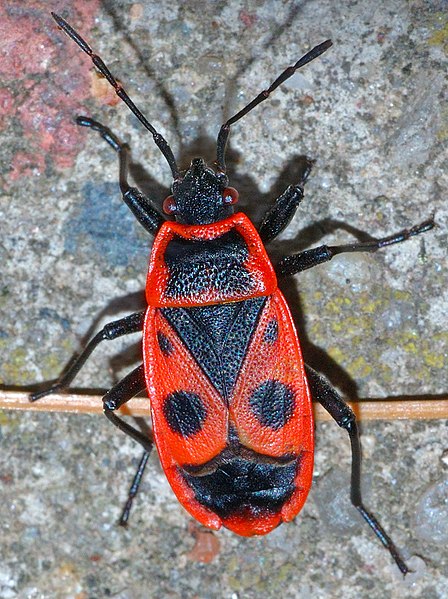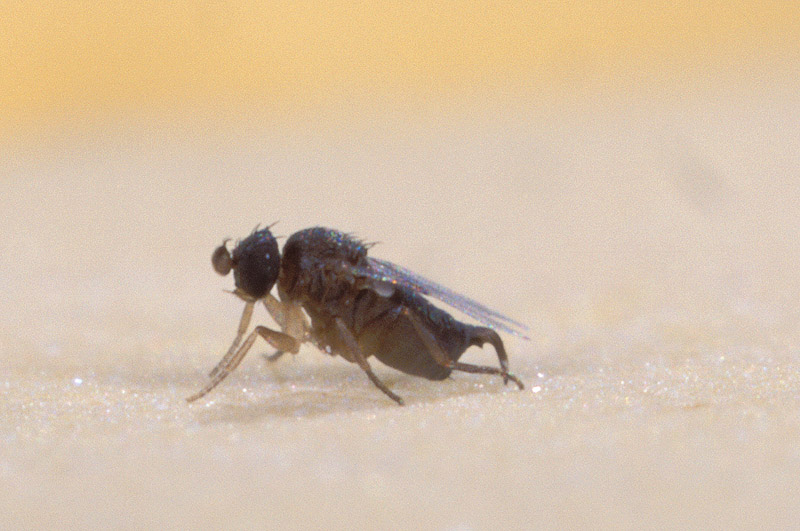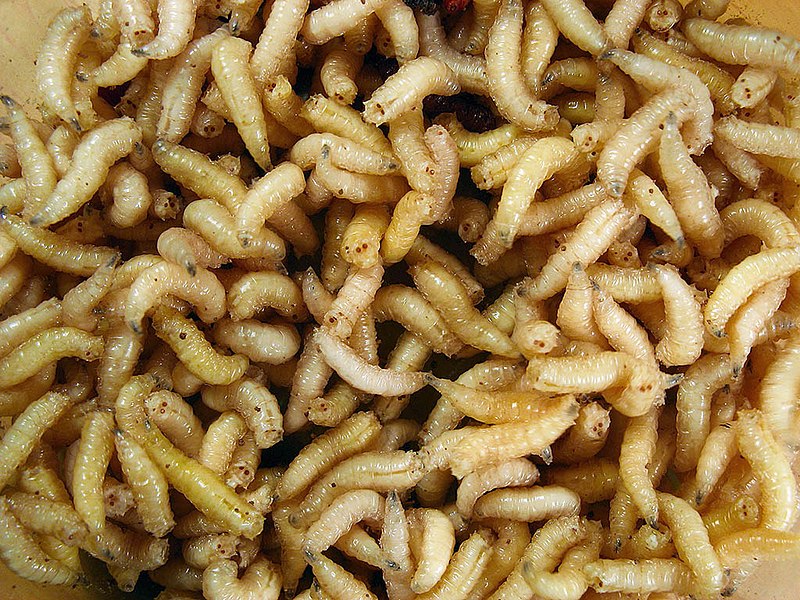 I’m told that bats feature in many people’s nightmares (I’ve kept several species, including Vampire Bats, and have found all to be quite calm, and even trainable in some cases, but that’s just me!). If bats themselves have nightmares, then surely the Amazonian Giant Centipede, Scolopendra gigantea, must make numerous appearances…the video linked below of one hunting bats in a cave will illustrate my point. Another of these aggressive beasts gave me more than a few sleepless nights, and stress-filled days, as well. Read More »
I’m told that bats feature in many people’s nightmares (I’ve kept several species, including Vampire Bats, and have found all to be quite calm, and even trainable in some cases, but that’s just me!). If bats themselves have nightmares, then surely the Amazonian Giant Centipede, Scolopendra gigantea, must make numerous appearances…the video linked below of one hunting bats in a cave will illustrate my point. Another of these aggressive beasts gave me more than a few sleepless nights, and stress-filled days, as well. Read More »
Category Archives: Insects
Feed SubscriptionAssassin Bugs – Captive Care and a Spider-Hunting Assassin – Part 2
 Please see Part 1 of this article to learn about Assassin Bugs that lure prey by tricking spiders and termites.
Please see Part 1 of this article to learn about Assassin Bugs that lure prey by tricking spiders and termites.
Commercially Available Species
West Africa’s White-Spotted Assassin Bug (Platymeris biguttatus) and the Red-Spotted Assassin (P. rhadamanthus) of East Africa are sometimes offered for sale in the USA and are well-established in private and public insect collections.
Warning: All Assassin Bugs can administer a painful bite with their sharp proboscis, or rostrum. As infection and an allergic reaction to their venom are distinct possibilities, they should only be kept by well-experienced adults. These and other species can also spray their venom, so protective eyewear is a must. All Assassin Bugs, including the US natives, should be handled only with forceps. Read More »
Assassin Bugs – Captive Care and Notes on Spider-Hunting Assassins – Part 1
 Assassin Bugs, while not the best known of invertebrate pets, are actually quite popular with insect specialists and in public collections. I began working with 2 African species in the early 80’s, and soon built up a collection of native forms as well. Recent studies at Australia’s Macquarie University have revealed that one Assassin Bug captures spiders by tweaking their webs in imitation of a trapped insect. I’ll cover the care of some commercially available Assassin Bugs in Part 2.
Assassin Bugs, while not the best known of invertebrate pets, are actually quite popular with insect specialists and in public collections. I began working with 2 African species in the early 80’s, and soon built up a collection of native forms as well. Recent studies at Australia’s Macquarie University have revealed that one Assassin Bug captures spiders by tweaking their webs in imitation of a trapped insect. I’ll cover the care of some commercially available Assassin Bugs in Part 2.
Hunting the Hunters
Assassin Bugs are predatory insects of the Order Hemiptera (insects with piercing mouthparts). Most lie in wait for invertebrates to stray within reach, others feed upon blood, and a few employ elaborate ruses in order to trick their prey within striking range. Read More »
Insects, Spiders, Other Invertebrates Have Distinct Personalities – New Research
 Most invertebrate keepers have noticed that individuals of the same species often behave quite differently under the same circumstances. For example, one Giant Bird-Eating Spider might feed in broad daylight and be content to remain in the open, while another refuses to eat unless provided with a deep burrow and complete darkness – I can recall countless similar observations. Does this mean that these “simple” creatures have personalities? According to a recent study, the answer may be “yes”…
Most invertebrate keepers have noticed that individuals of the same species often behave quite differently under the same circumstances. For example, one Giant Bird-Eating Spider might feed in broad daylight and be content to remain in the open, while another refuses to eat unless provided with a deep burrow and complete darkness – I can recall countless similar observations. Does this mean that these “simple” creatures have personalities? According to a recent study, the answer may be “yes”…
How Does One Test Insect Personalities?
An article published in the September, 2010 issue of The Proceedings of the Royal Society (B), reveals that individual insects exhibit distinct personality traits, and that these traits remain consistent in different situations. Read More »
Phorid or Scuttle Flies – A Common Pest in Herp and Invertebrate Collections – Part 1
 Reptile, Amphibian, Tarantula and Scorpion owners often ask me how to rid their terrariums and homes of the “Fruit Fly” hoards that crop up from time to time. Those keeping carnivorous pets are rightly confused, since fruit is never on the menu, yet the flies persist. Usually, the culprit turns out to be annoying little beast known as the Phorid Fly (a/k/a Scuttle or Humpbacked Fly). The species most commonly seen in the USA is Megacelia scalaris, but some 4,000+ other members of the insect family Phoridae plague pets and people the world over.
Reptile, Amphibian, Tarantula and Scorpion owners often ask me how to rid their terrariums and homes of the “Fruit Fly” hoards that crop up from time to time. Those keeping carnivorous pets are rightly confused, since fruit is never on the menu, yet the flies persist. Usually, the culprit turns out to be annoying little beast known as the Phorid Fly (a/k/a Scuttle or Humpbacked Fly). The species most commonly seen in the USA is Megacelia scalaris, but some 4,000+ other members of the insect family Phoridae plague pets and people the world over.
Description and Life History
Phorid Flies do indeed resemble Fruit Flies, but a close inspection will reveal them to be lighter in color (tending towards grey), more prone to running (“scuttling”) than flying, and without the Fruit Flies’ red eyes.
Like Fruit Flies, if there is food, they will appear, no matter what precautions are taken (it really is amazing how quickly they “materialize” when even the tiniest food source is available). They are very common in cricket-rearing facilities, and frequently hitch a ride to a new home along with this common food item.
Unlike their sweet-toothed cousins, however, Phorid Flies and their larvae (or maggots) are scavengers, feeding upon dead insects, feces, eggs and necrotic flesh associated with wounds.
Potential Problems
 While Phorid Flies have not been known to injure healthy herps or invertebrates, in addition to being a plain nuisance they can colonize wounds, where they may cause complications. Their maggots also commonly appear inside dead or infertile reptile eggs. This puzzled me until it was discovered me (not by me!) that the flies lay their own eggs on the shells of reptile eggs – the hatchling maggots are so tiny that they actually enter the egg via the air pores in the shell! It’s not known whether they attack healthy eggs, but it is not likely.
While Phorid Flies have not been known to injure healthy herps or invertebrates, in addition to being a plain nuisance they can colonize wounds, where they may cause complications. Their maggots also commonly appear inside dead or infertile reptile eggs. This puzzled me until it was discovered me (not by me!) that the flies lay their own eggs on the shells of reptile eggs – the hatchling maggots are so tiny that they actually enter the egg via the air pores in the shell! It’s not known whether they attack healthy eggs, but it is not likely.
Studies at zoos have revealed that Cockroaches, Mice, House Flies and other pests can spread harmful micro-organisms and diseases from cage to cage. Research is needed regarding Phorid Flies, but considering their tiny size it is useful to keep this possibility in mind.
Further Reading
Further information on the control and habits of Phorid Flies and related species here.
Phorid Fly Maggots image referenced from wikipedia and originally posted by Dalius Baranauskas (Dalius 1000)
 That Reptile Blog – Reptile, Amphibian and Exotic Pet Care and Information
That Reptile Blog – Reptile, Amphibian and Exotic Pet Care and Information
